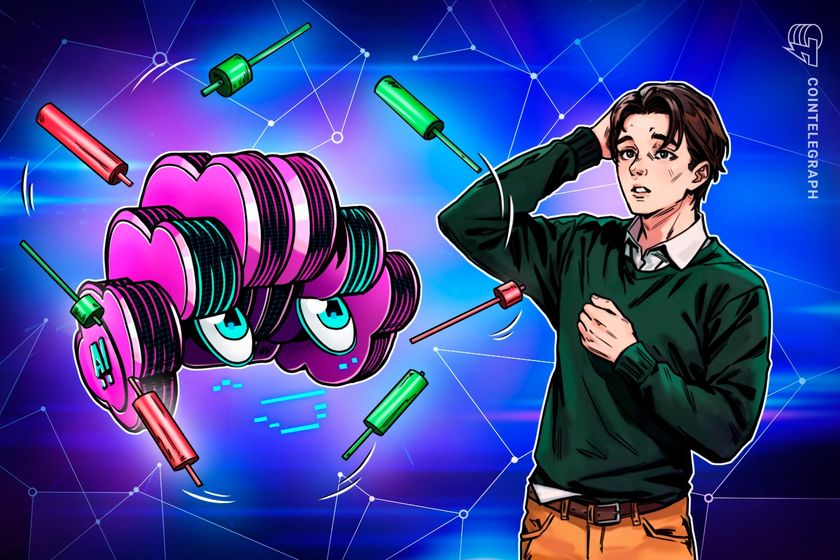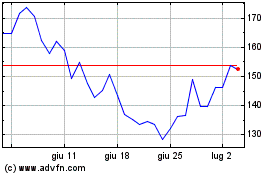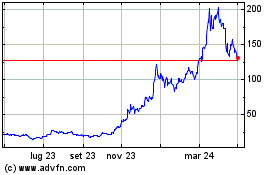

Key takeaways
-
Grok 3 adjusts its predictions based on evolving market trends
by analyzing real-time data patterns.
-
Combining technical analysis with sentiment data improves
accuracy; Grok 3 effectively identifies potential trade
opportunities.
-
Backtesting strategies before live trading is crucial; testing
Grok 3’s prompts using historical data helps refine conditions and
improve performance.
-
While Grok 3 can automate trades, human oversight remains
critical in adapting to unexpected market conditions.
Crypto trading is complex. Prices can swing wildly, and even
experienced traders struggle to keep up. That’s why automation
tools are gaining attention, with many now exploring Grok 3, an
advanced artificial
intelligence (AI) model from xAI (founded by Elon Musk).
Grok 3 wasn’t built specifically for trading, but its ability to
analyze data, spot patterns and interpret trends has encouraged
traders to test it for automated strategies. The idea is simple:
Let Grok 3 make data-driven decisions, removing the emotional
guesswork that often leads to poor trades.
But does it actually work? Some traders report impressive
results, while others find it unpredictable, especially in volatile
markets.
This article digs into what happens when you automate crypto
trades with Grok 3. From successful strategies to unexpected risks,
you’ll get a clear picture of what to expect, plus actionable tips
to improve your results.
What is Grok 3 and how does it relate to crypto trading?
Grok 3 is an
AI model designed by xAI, an artificial intelligence company
founded by Elon Musk. While its primary focus is natural language
processing, some traders are now testing Grok 3 as a potential tool
for improving crypto trading strategies. Unlike traditional
trading bots
operating on rigid rules, Grok 3’s flexible design allows it to
analyze diverse data sources and
uncover patterns that might be overlooked.
Why some traders are turning to Grok 3
Grok 3’s appeal lies in its ability to handle complex data, a
crucial advantage in crypto markets, where price moves are often
triggered by unexpected events or sentiment
shifts.
Here’s where traders say Grok 3 has potential:
-
Identifying market sentiment trends: Crypto
markets are heavily influenced by emotions like FOMO (fear of
missing out) and FUD (fear, uncertainty, doubt). Grok 3 can analyze
social media, news headlines and community discussions to assess
changing sentiment, a key factor in crypto volatility.
-
Recognizing hidden patterns: Grok 3’s machine
learning capabilities allow it to detect subtle correlations
between indicators that traditional bots may overlook. For
instance, Grok 3 may link an increase in social sentiment with
rising whale activity to predict bullish momentum.
-
Flexible analysis based on prompts: Rather than
following static rules like “Buy when RSI falls below 30,” Grok 3
enables traders to design more complex strategies using natural
language instructions.
What happens when Grok 3 is used to automate crypto
trades?
Grok 3 isn’t your typical crypto trading bot. It doesn’t place
trades directly or integrate with exchanges on its own. But it can
help traders build smarter, faster and more flexible automation
systems. From writing trade logic to analyzing
market
sentiment, Grok 3 is already being used in the real world to
streamline how crypto strategies are created and tested.
Instead of manually scripting every piece of logic, traders are
now using Grok 3 to generate working code for bots. For example, a
user asked Grok 3 to write token
buy/sell logic with parameters like slippage,
take-profit
and gas priority fees. It generated a script that can be plugged
into DeFi tools or expanded with 0x and Uniswap APIs.
Some traders use Grok 3 to build end-to-end bots tailored to
niche tokens or specific strategies. In another example, Grok 3 was
used to create an automated system that scans price action and
triggers trades under strict conditions. It
doesn’t just stop at buy/sell logic. Grok also writes portfolio
rebalancing scripts and can simulate how positions would perform
under different volatility conditions.
Here is an example of a prompt fed into Grok 3, along with the
output received.
Grok 3’s response: High-frequency trading bot framework for
Solana (SOL)
Below is a structured outline for a high-frequency trading bot
framework designed for Solana (SOL), focusing on one-minute price
fluctuations, risk management and trade execution. This outline
provides a modular structure with placeholders for key components,
avoiding specific implementation details as requested.
1. Core configuration
-
Purpose: Define global settings and constants
for the bot.
-
Components:
Solana network endpoint (e.g., mainnet RPC URL)
Wallet configuration (private key or keypair for trading)
Trading pair (e.g., SOL/USDC)
Timeframe (one-minute candlestick data)
Trade size ($100 per position)
Max trades (10 concurrent or sequential positions)
Profit target ($50 total)
Max loss per trade ($20)
2. Data acquisition module
-
Purpose: Fetch and process real-time SOL price
data.
-
Components:
WebSocket connection to Solana blockchain or exchange API (e.g.,
Serum, Raydium, or centralized exchange like Binance)
1-minute OHLCV (Open, High, Low, Close, Volume) data stream
Data buffer for storing recent price history
Error handling for connection drops or latency
3. Volatility analysis module
-
Purpose: Assess SOL’s price volatility to
inform trade decisions.
-
Components:
Placeholder: Calculate short-term volatility (e.g., standard
deviation or ATR over one-minute candles)
Placeholder: Define volatility thresholds (e.g., high/low
volatility states)
Output: Volatility score or signal to adjust trade
frequency/size
4. Trade signal generator
-
Purpose: Generate buy/sell signals based on
price fluctuations.
-
Components:
Placeholder: Simple momentum strategy (e.g., price crossing a
short-term moving average)
Placeholder: Filter signals using volatility analysis
Signal validation (e.g., avoid over-trading within one-minute
window)
Output: Buy/sell signal with timestamp
5. Risk management module
-
Purpose: Enforce risk controls and position
limits.
-
Components:
Position size calculator (fixed at $100 per trade)
Max loss check ($20 per trade stop-loss)
Total profit/loss tracker (halt at $50 profit or after 10
trades)
Concurrent trade limiter (cap at 10 active positions)
Emergency stop (pause bot on extreme volatility or connectivity
loss)
6. Trade execution module
-
Purpose: Execute trades on the Solana
blockchain or exchange.
-
Components:
Placeholder: Build Solana transaction (e.g., swap SOL for USDC
via a DEX like Raydium)
Order type (market order for speed in one-minute timeframe)
Slippage tolerance (e.g., 0.5% max slippage)
Transaction signing and submission
Confirmation listener (await transaction finality)
Error handling (e.g., retry on failed execution)
7. Performance monitoring module
-
Purpose: Track and log bot performance in real
time.
-
Components:
Trade log (entry price, exit price, profit/loss, timestamp)
Running total profit/loss calculator
Performance metrics (e.g., win rate, average trade duration)
Alert system (notify on profit target, max loss, or errors)
8. Main control loop
-
Purpose: Orchestrate bot operations in a
continuous cycle.
-
Components:
Initialize bot (load config, connect to data feed)
Loop:
Fetch one-minute price data
Analyze volatility
Generate trade signal
Apply risk management checks
Execute trade if conditions met
Update performance metrics
Exit conditions (profit target hit, max trades reached, or
manual stop)
9. Shutdown and cleanup
-
Purpose: Safely terminate the bot and finalize
operations.
-
Components:
Close open WebSocket connections
Finalize pending transactions
Save trade log and performance summary
Release resources (e.g., memory, wallet connections)
Notes
-
This framework assumes integration with Solana’s ecosystem
(e.g., using a DEX or liquidity pool). Adjust the execution module
if targeting a centralized exchange.
-
Volatility analysis and signal generation are left as
placeholders for customization (e.g., technical indicators or
machine learning models).
-
Risk management is strict to align with the $50 profit goal and
$20 max loss per trade, ensuring the bot operates within defined
boundaries.
Caution! The above is a tailored outline shaped
by the user’s prompt, targeting one-minute price fluctuations, risk
management and trade execution. Its output varies with prompt
detail, as specificity sharpens results. Moreover, placeholders
like volatility analysis await user customization, reflecting Grok
3’s adaptive learning. It’s a conceptual guide, not code, and
success hinges on implementation and market conditions. For deeper
refinement, such as Solana-specific tweaks, users can provide more
context. Grok 3 adjusts using their input and its latest
insights.
Let’s learn the general steps required to set up Grok 3 for
automated crypto trading.
How to set up Grok 3 for automated crypto trading
Setting up Grok 3 for AI-powered crypto
trading automation isn’t as straightforward as installing a
typical trading bot. Since Grok 3 wasn’t built for direct trading,
it requires thoughtful setup, integration and customization. Below
is a practical guide to setting up Grok 3 effectively for automated
crypto trading with AI (artificial intelligence).
Step 1: Choosing a compatible trading platform
Since Grok 3 doesn’t connect directly to crypto exchanges, it
requires integration with third-party platforms that support API
automation. Platforms like:
-
3Commas: Ideal for executing trades via
automated strategies.
-
TradingView: Used for generating trade signals
using Pine Script.
-
CryptoHopper: Offers custom strategy-building
tools with API integration.
Ensure that the chosen platform offers robust API support for
managing trade execution, setting risk controls and tracking
performance.

Step 2: Integrating Grok 3 with the trading platform
Grok 3 doesn’t connect directly to crypto exchanges; integration
requires creative workarounds:
-
API integration via automation tools: Platforms
like Zapier or Make.com can connect Grok 3’s analysis to trading
platforms.
-
Custom Python scripts: For tech-savvy traders,
Grok 3's insights can be processed through Python scripts that
execute trades based on Grok 3’s recommendations.
-
No-code automation tools: Services like IFTTT
can trigger basic trading actions based on Grok 3’s sentiment
analysis.
Step 3: Defining trading strategies with Grok 3
Grok 3’s success hinges on well-defined strategies. Unlike
traditional bots that rely solely on technical signals,
Grok 3 crypto
trading bot can combine multiple factors, including:
-
Technical indicators: RSI, MACD, Bollinger
Bands, etc.
-
Sentiment analysis: Social media trends,
influencer opinions and news headlines
-
Onchain data: Whale
activity, exchange inflows/outflows and large wallet movement.

Step 4: Backtesting strategies before live trading
Before deploying Grok 3’s strategy in live markets, backtesting
is essential to evaluate its performance. Backtesting can
reveal:
-
Accuracy of trade signals: Identify how often
Grok 3’s suggested trades align with profitable outcomes.
-
False signal detection: Ensure Grok 3 isn’t
generating excessive buy/sell recommendations in volatile or
stagnant markets
-
Refinement opportunities: Fine-tune conditions
such as RSI thresholds, sentiment scores or trade exit
conditions
Examples of tools for backtesting include TradingView and
CryptoQuant.
Step 5: Implementing risk management controls
Even with solid insights, crypto markets are unpredictable.
Adding risk controls minimizes potential losses:
-
Stop-loss orders: Automatically exits trades if
prices move beyond a set
threshold.
-
Position limits: Restricts trade size to reduce
exposure in uncertain markets.
-
Trailing stops: Locks in profits during upward
trends while minimizing downside risk.
Example of risk control prompt:
“Write a code to handle buying and selling a token with the
given parameters, including priority fees, slippage, and a
take-profit mechanism.”

Please note that the output shown above is not complete and is
provided for illustration purposes only.
Step 6: Ongoing monitoring and strategy refinement
Grok 3’s strength lies in its adaptability, but it requires
ongoing monitoring to ensure optimal results. Regularly review:
-
Performance data: Assess win rates, profit
margins and signal accuracy.
-
Market conditions: Adjust strategy if major
shifts (e.g., regulatory changes or macroeconomic factors) impact
sentiment or momentum.
Pro tip: Revisiting Grok 3’s
prompts regularly can
refine strategy outcomes and improve long-term performance.
Limitations of Grok 3
Despite its strengths, Grok 3 has limitations that traders must
consider.
-
Data loss: Crypto trading thrives on accurate
and real-time data. However, crypto trading automation with Grok 3
has been reported to lose chunks of data, miscount words and
provide incorrect time references, which can be detrimental in a
fast-moving market and result in inaccurate signal detection,
delayed responses to market events and flawed strategy
execution.

-
Forgetfulness: One of the biggest frustrations
highlighted by some users is Grok 3’s “retrograde amnesia,” when it
forgets everything from previous sessions. For crypto traders, this
is a nightmare. Imagine building a trading strategy and needing
Grok 3 to remember past trends and conversations, only for it to
start fresh each session.

-
Bias: Grok 3 may deliver biased responses,
potentially relying on incomplete or skewed sources. For traders
who depend on unbiased sentiment analysis to gauge market mood,
this shift could lead to misleading insights and poor
decision-making.
-
Slower execution speed: Since Grok 3 processes
information based on detailed prompts, its trade signals may lag
behind fast-moving price changes.
-
Prompt dependence: Grok 3’s accuracy depends
heavily on well-structured prompts. Vague or incomplete
instructions often produce unreliable results.
While Grok-3 and other AI systems offer powerful tools for
automating crypto trades, caution is essential. Their performance
depends heavily on the quality of data and the strategies they’re
programmed with, meaning unexpected market shifts or flawed inputs
can lead to significant losses.
Remember, AI lacks human intuition and may struggle with
unprecedented events, so relying solely on it without oversight is
risky. Always test strategies with small amounts first and get help
from experts before making large investments.
...
Continue reading Tried automating crypto trades with
Grok 3? Here’s what happens
The post
Tried automating crypto trades with Grok 3? Here’s
what happens appeared first on
CoinTelegraph.
Grafico Azioni Solana (COIN:SOLUSD)
Storico
Da Mar 2025 a Apr 2025

Grafico Azioni Solana (COIN:SOLUSD)
Storico
Da Apr 2024 a Apr 2025
